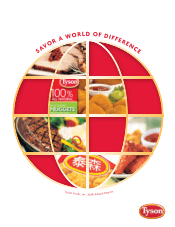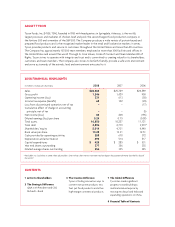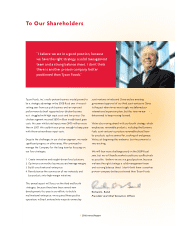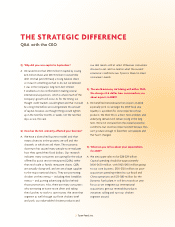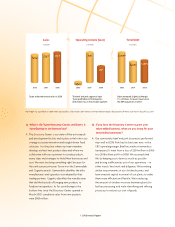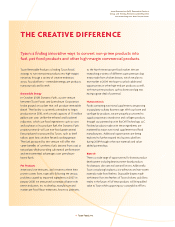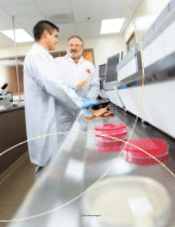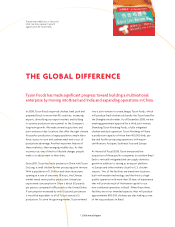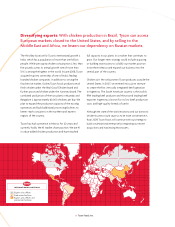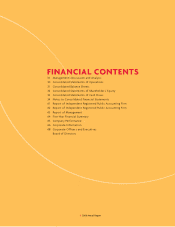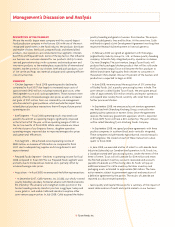Tyson Foods 2008 Annual Report Download - page 4
Download and view the complete annual report
Please find page 4 of the 2008 Tyson Foods annual report below. You can navigate through the pages in the report by either clicking on the pages listed below, or by using the keyword search tool below to find specific information within the annual report.
THE STRATEGIC DIFFERENCE
Q&A with the CEO
Q: Why did you raise capital in September?
A: We raised more than $740 million in capital by issuing
22.4 million shares and $457.5 million in convertible
debt. We had (and still have) a strong balance sheet,
so it wasn’t something we had to do, but we believed
it was in the Company’s long-term best interest.
It enabled us to be comfortable in making several
international acquisitions, which is where much of the
Company’s growth will occur. As for the timing, we
thought credit markets would tighten and that it would
be a long time before we could generate this amount
of capital; however, we thought things would tighten
up in the next few months or weeks, not the next few
days, as was the case.
Q: How has the U.S. economy affected your business?
A: We have a diversifi ed business model, and that
means diversity in the proteins we sell and the
channels in which we sell them. The economic
downturn has caused many people to re-evaluate
how they spend their food dollars. Our research
indicates many consumers are opting for the value
offered by quick service restaurants (QSRs) rather
than mid-scale or family restaurant chains. QSRs
are actually doing well, and we are a large supplier
to the major national chains. They are promoting
chicken on their menus – including their breakfast
menus – and putting advertising dollars behind
those promotions. Also, there are many consumers
who are eating at home more often and taking
their lunches to work to save money. We serve that
segment as well through our fresh chicken, beef
and pork, our value-added chicken products and
our deli meats sold at retail. Wherever consumers
choose to eat, and no matter what the current
economic conditions are, Tyson is there to meet
consumers’ needs.
Q: The world economy isn’t doing well either. With
the stronger U.S. dollar, how concerned are you
about exports in 2009?
A: We benefi ted tremendously from exports in 2008,
especially pork. As we begin the 2009 fi scal year,
liquidity is a problem for some importers of our
products. We think this is a short-term problem, and
underlying demand will remain strong in the long
term. We’re not immune from the overall economic
conditions, but countries import protein because they
can’t produce enough to feed their own people, and
that hasn’t changed.
Q: What can you tell us about your expectations
for 2009?
A: We anticipate sales to be $28-$29 billion.
Capital spending should be approximately
$600-$650 million, with $425-$450 million going
to our core business, $100-$120 million on post-
acquisition spending related to our Brazil and
China operations and $75-$80 million for the
Dynamic Fuels plant. It will be a transition year
for us as we integrate our international
acquisitions, get our renewable products
initiatives rolling and turn our chicken
segment around.
2 Tyson Foods, Inc.

